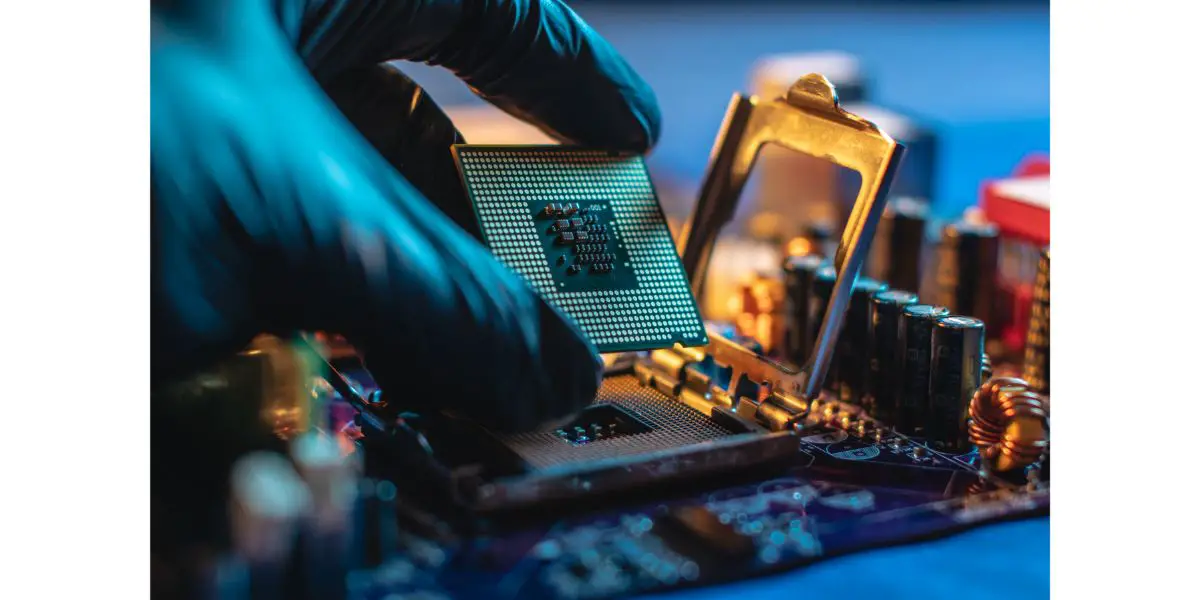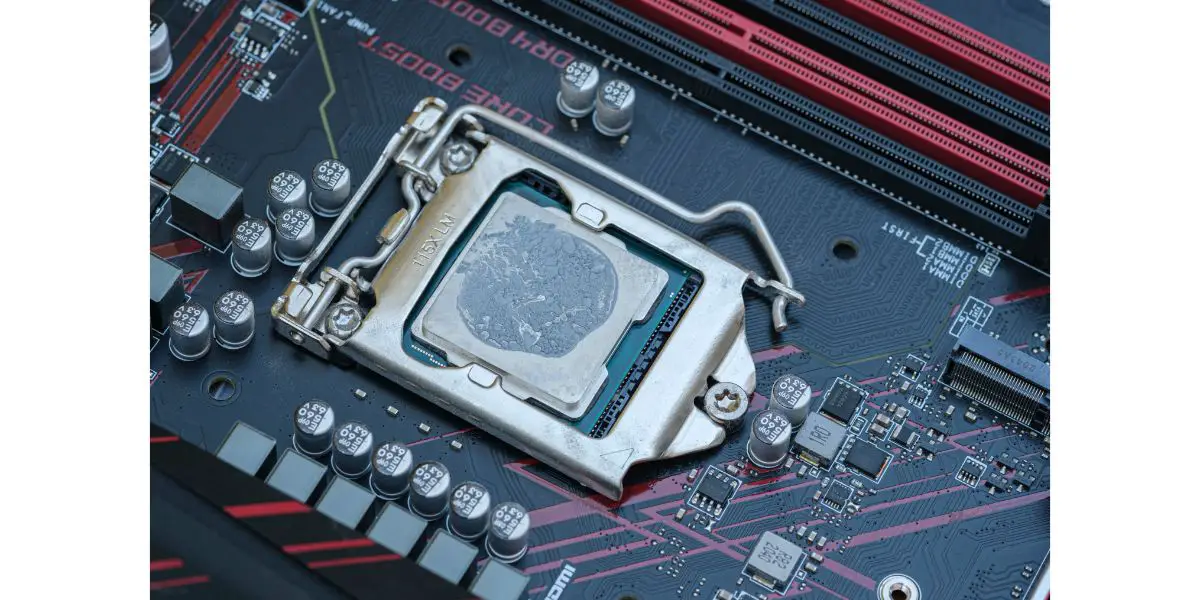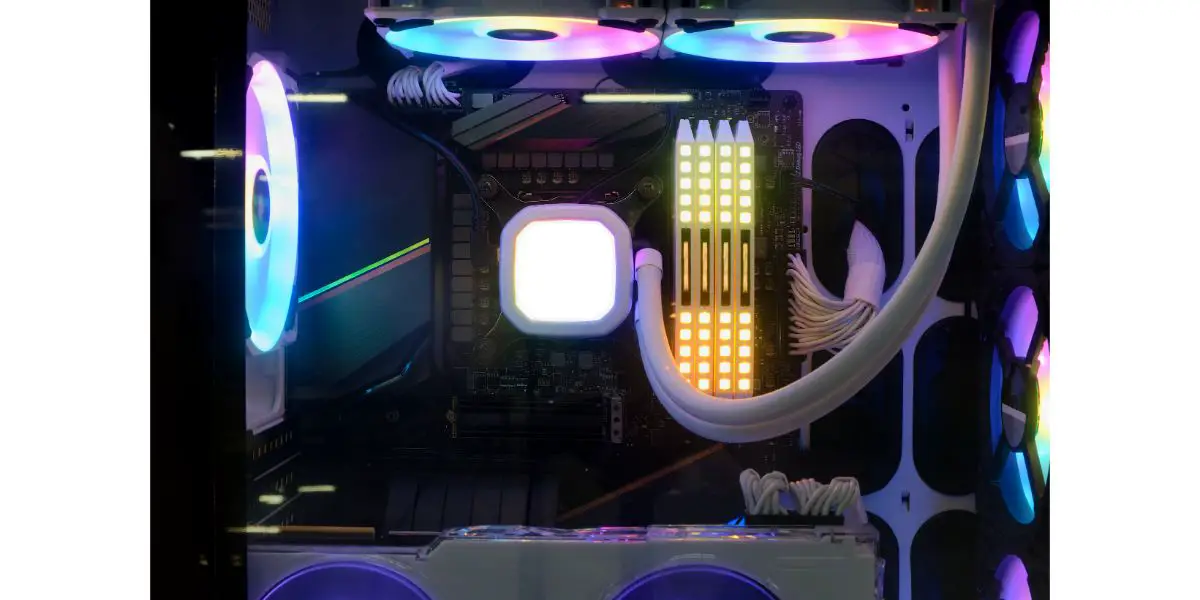Disclaimer: This post may contain affiliate links, meaning we get a small commission if you make a purchase through our links, at no cost to you. For more information, please visit our Disclaimer Page.
Almost anyone who’s ever installed an aftermarket cooler has had to apply the thermal paste at some point. We’re told the silvery gray paste is critical to keeping computers functioning smoothly. So what happens if you don’t use any thermal paste?
Table of Contents
Here’s Why You Should Never Run a CPU Without Thermal Paste
It would be best if you never ran a CPU without thermal paste because it will cause your CPU to overheat when under stress. Too much heat can cause your computer to perform poorly and hang frequently. High heat can also damage or shorten the lives of individual components in your machine.
Besides the annoyance of working on a temperamental machine, damage resulting from excessive heat can shorten the lifespan of a computer or individual components. Thus, heat damage can lead to higher expenses and greater downtime for machine maintenance.
That’s why, beyond certain temperature thresholds, computers will usually shut down to prevent damage to their components.
But what role does thermal paste play in keeping a computer cool? And why is it so central to the task?
Thermal Paste Plays a Crucial Role in Cooling Down Your Computer
Thermal paste is a silver-gray paste that comes in small tubes with nozzle heads for easy application. It creates consistent contact between Integrated Heat Spreaders (IHS) – the flat metal covers of CPUs and GPUs – and the base plates of cooling systems.
While IHSs and cooler base plates appear flat to the naked eye, they aren’t perfectly smooth at microscopic scales. If they were, there would be no need for thermal paste. Unfortunately, manufacturing perfectly smooth metal faces for these devices is not technically feasible.
That’s where thermal paste comes in. Once applied to the IHS surface and smoothened by contact with the base plate of a cooler, it spreads out to fill the space between the two surfaces.
As heat builds up in the CPU over time, the thermal paste helps transfer the heat efficiently away from the IHS and to the cooler’s base plate. From the cooler base plate, the heat is transferred away via convection to the fins of the cooler’s heat sink and expelled into the environment.
In a well-configured machine, intake fan(s) helps adequately circulate the air inside a computer’s case so that hot air is continuously exchanged for cooler air. This keeps the temperature within the different areas of a machine within tolerable limits.
Thus, thermal paste plays a critical role in maintaining temperatures within a computer.
Without Thermal Paste, Your Computer May Be Damaged by Heat
Without thermal paste, there will be gaps in the contact between an IHS and a cooler’s base plate. These gaps will be filled with air. Because air is not a very good conductor of heat, even the tiniest pocket of air can lead to heat retention.
The heat retained closer to the CPU will not be drawn away by the heat sink and expelled. Over time, improper heat dissipation will lead to heat build-up inside the computer, lowering performance and component lifespans.
In extreme cases, it may damage crucial components, such as CPUs or GPUs.
Expired Thermal Paste Is As Bad as No Thermal Paste
Not only is thermal paste crucial to proper cooling, but it also needs timely replacement.
Although most thermal pastes will last anywhere from 2-5 years, their lifespan depends on several factors. These include:
- The quality of thermal paste used: Different thermal pastes are made from different materials to offer greater choice in the quality versus price trade-off. A premium product tends to last longer than the most affordable one.
- The amounts of heat generated: Power users such as gamers, graphic designers, video editors, cryptocurrency miners, and modelers tend to stress out their CPUs and GPUs more than average users. Continuous and prolonged exposure to heat can cause the thermal paste to dry up and crack.
These variations in how quickly or slowly thermal paste expires explain why some manufacturers recommend replacing thermal paste every three years (or even every other year for power users).
Either way, the thermal paste will eventually go bad. When this happens, it simply stops performing its proper function.
Consistently high temperatures, especially when a machine is not under severe strain, are the first sign that your thermal paste might be past its due date. When this happens, it’s time to replace the thermal paste on your CPU or GPU’s IHS.
To do so, follow these steps:
- Remove the fan and clean the IHS of the CPU or GPU with an alcohol swab.
- Apply a pea-sized droplet of thermal paste to the center of the cleaned IHS.
- Push the heat sink gently back into place so that the thermal paste spreads evenly across the surface of the IHS.
- Plug in the fan and any other loose cables.
- Turn your system on and monitor temperatures to see if they have fallen back into a desirable range.
You may have to repeat the process if the temperatures haven’t come down. If that doesn’t work, your component may be permanently damaged and require replacement.
Different Types of Thermal Pastes
There are many thermal paste manufacturers today. As with other components, different brands are aimed at different customers. Some offer excellent quality at premium prices, and others provide tools that will do the job at affordable rates.
There are also different types of thermal pastes based on the material used. The three most common types of thermal pastes today are:
- Silicone thermal pastes: They are affordable, easy to apply, and do not dry out fast. However, they are the least effective at heat transfer.
- Ceramic thermal pastes: Also easy and safe to use, they provide better results than silicone thermal pastes.
- Liquid metal thermal pastes: They are the most popular thermal pastes on the market because they are the best heat conductors.
Remember that whatever paste you choose will eventually expire and need to be replaced.
Also, always apply the correct amount of paste. Too little will not conduct heat effectively, and too much can smear onto the motherboard, hardening over or damaging other components.
Why Computers Need To Be Cooled Down
Computers draw on electrical energy to do processing tasks and convert it to heat. The more processing involved, the greater the heat generated. That’s because electrical resistance generated by computer circuits and the charging and discharging of capacitors are the leading causes of heat generation.
Moreover, the smaller the circuitry, the greater the heat produced. This is why CPUs and GPUs produce the most heat.
Computing Generates Tremendous Amounts of Heat
According to Suresh Garimella, a specialist at Purdue University, “The heat flux generated by today’s microprocessors is loosely comparable to that on the Sun’s surface. But unlike the Sun, the devices must be cooled to temperatures lower than 100 °C ( 212 °F)” to function properly.”
Heat Damages Electronic Components
At temperatures above 100 °C ( 212 °F), critical components in a computer – such as its processor and graphics card – will no longer be able to process information in real-time accurately. You may start seeing artifacts or find your system hanging.
Prolonged use at high temperatures will damage components permanently, requiring them to be replaced.
Computers Automatically Lower Performance When Too Hot
That’s why manufacturers like Intel program chips to perform slower beyond certain temperature thresholds. While temporarily frustrating, such simple safety mechanisms are designed to protect your most expensive components from heat damage.
If your processor is consistently unable to hit its highest speeds, even when performing the most processor-intense tasks, it may be time to look at a better cooling solution.
Conclusion
Using thermal paste is essential with an aftermarket cooler. Not using thermal paste or delaying replacing expired thermal paste can slow your computer and damage its components.



